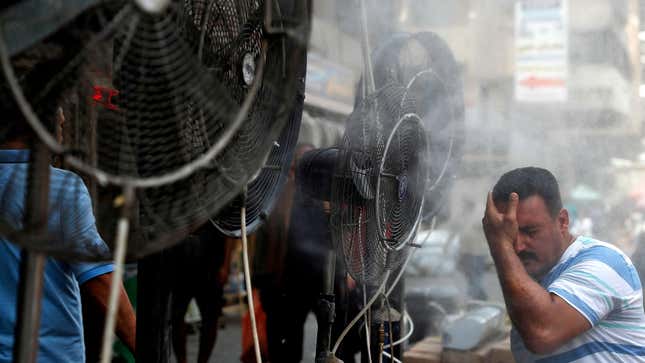
Urban heat is more dangerous—and even deadly—than ever. That’s true for two reasons: Globally, more people are flocking to cities, and cities themselves are getting hotter due to the climate crisis.
Those are the findings of a new study, published in the Proceedings of the National Academy of Sciences on Monday. In it, researchers examined heat exposure in 13,115 global cities from 1983 to 2016. The findings are a warning to cities as the climate crisis turns up the heat even further.
To first determine how hot and humid these cities are getting, the researchers examined temperatures using a data set that combines infrared satellite imagery and readings from thousands of weather stations. That helped provide widespread coverage, including areas with more sparse on-the-ground sensors.
The authors specifically focused on how often cities reached “extreme heat,” defined as a wet-bulb temperature of at least 86 degrees Fahrenheit (30 degrees Celsius), which is roughly the equivalent of 106 degrees Fahrenheit on the so-called “real feel” heat index. At that reading, most healthy people find it hard to function outside for very long, and older and unhealthy people face conditions that could be deadly. Wet-bulb temperature is a complex metric that combines measurements of temperature, humidity, heat radiation, and wind to determine what conditions the human body can handle.
Then, to see how many people were exposed to this extreme heat, the authors paired their weather data with statistics on the cities’ populations over the same 33-year time span.
The findings show that the number of person-days (or number of days multiplied by instances of extreme heat) that city dwellers were exposed to dangerous heat went from 40 billion per year in 1983 to 119 billion in 2016, which represents a stunning threefold increase. The authors found that population growth was responsible for two-thirds of that increase and that global warming accounted for the remaining third, but those proportions varied widely from city to city.
Of all the cities examined, Dhaka, Bangladesh, saw the highest rise of dangerous heat exposure, with an increase of 575 million person-days of extreme heat over the 33-year period. The city’s soaring population accounted for 80% of that increase; 4 million people lived there in 1983, but 22 million people do today.
Rising temperatures had a major impact on other major cities, such as Baghdad, Cairo, and Mumbai. Cities along the Gulf Coast also experienced more people-days of heat exposure due to an uptick in temperatures, as did cities across Europe, where population growth has remained fairly flat.
Several factors are responsible for cities warming. “The first ... is the urban heat island effect,” said Chris Funk, director of the Climate Hazards Center at the University of California, Santa Barbara co-author of the study. “Temperatures in urban areas are higher because of the materials used to build roads and buildings.”
Another factor is historic. “Many ancient civilizations arose in hot, humid river basins like the Nile, Niger, Ganges, and Indus valleys. These were great places to develop agriculture and great cities,” said Funk. “But they are also places where the heat and humidity are producing extreme heat. And they are also places where the population is growing very rapidly. A big part of our results is that population growth, in areas that are already hot, is a major driver of increased heat hazards.”
The climate crisis is also increasing average temperatures in regions around the world, and this upward trajectory is slated to continue. That’s especially true if world leaders don’t act to lower greenhouse gas emissions, but even with urgent changes, some level of warming will be locked in. Kristina Dahl, a climate researcher at the environmental advocacy group Union of Concerned Scientists who did not work on the study, said the study shows how necessary it is to take steps now to protect urban dwellers as cities’ temperatures and populations increase in tandem.
“We can do that by swiftly and deeply reducing global heat-trapping emissions; implementing measures that reduce the urban heat island effect, such as planting trees and installing cool roofs; and making sure that city dwellers understand the dangers of extreme heat and are able to cool off, whether that’s at home with fans or air conditioning or at an easily accessible cooling center,” she said. “Critically, residents should be protected from utility shutoffs during heat waves so that they can use those at-home cooling options even in cases where they may be behind on their utility bills.”
Research into methods of cooling such as alternative air conditioners that don’t emit extremely damaging greenhouse gases is ongoing, as are efforts to bring efficient heat pumps into more homes. Lower tech cooling options are also on the table, but it’s clear we have our work cut out for us to reduce the risks of extreme heat.